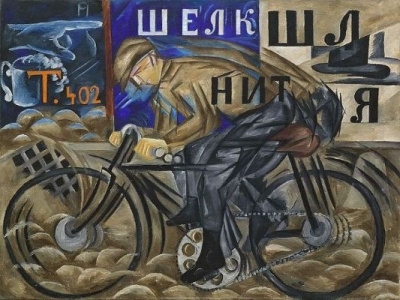
Futurism (1909 to 1918 AD)
Futurism is a modern art movement that began when 20th Century took hold of Europe. Artists took elements from Cubism, Surrealism and Neo-impressionisam to paint futuristic art that was dynamic and often expressed speed and motion. The focus was about creating a vision for the future, and often glorified war and the machine age.
The movement was invented by poet Filippo Tommaso Marinetti in 1909 and first gained followed in Italy when he published “Manifesto of Futurism” in “Le Figaro”, a popular newspaper in Paris. Futurism was vehement about disowning the past, and aimed at freeing Italy from its cultural heritage. The Manifesto said, “We will free Italy from her innumerable museums which cover her like countless cemeteries”.
The movement was first a literacy one, with novels, manifestos and poems issuing declarative and bombastic statements. Soon, the visual and performing artists also entered the sphere. Other well-known Futurism artists were Giacomo Balla, Umberto Boccioni and Gino Severini.
After World War I, many artists rejected the often nationalistic sentiments of Futurism, since many of its revolutionary artists became part of Italy’s fascist regime, and the movement gradually declined.
Examples
Dancer at Pigalle: Painted by Italian artist Gino Severini in Paris, it shows the movement of a dancer through her swirling dress and intersecting lines. There are also four stage lights that focus on her, framing her in the centre of the image. This is a classic representation of a futuristic painting with elements of Cubism embedded in it.
The Cyclist: Natalia Goncharova’s painting shows a cyclist pedalling fast, passing by stores with advertisements on them. The movement is so well rendered that you can see the advertisements floating over the cyclist, to portray speed. The cyclist’s legs, body and feet are used well to indicate motion.
Battle of lights, Coney Island, Mardi Gras: This painting by Joseph Stella is a cacophony of shapes and colours, all mirroring the soul of Coney Island, including its famous roller-coaster. The entire painting, with its bright lights and mardi gras crowd, creates the feeling of a joyous celebration.
Wow facts
- Futurism, in the literary sphere, developed a language that mirrored the dynamism and ruthlessness of the new world. The futurists established new genres and created “parole in liberta” (words-in-freedom) or free-word poetry. This was poetry liberated from linear typography, syntax and spelling.
- Futurists used a number of new techniques to express motion and speed, including repetition, blurring and using lines of force. The last method was inspired by Cubism.
Picture Credit : Google



